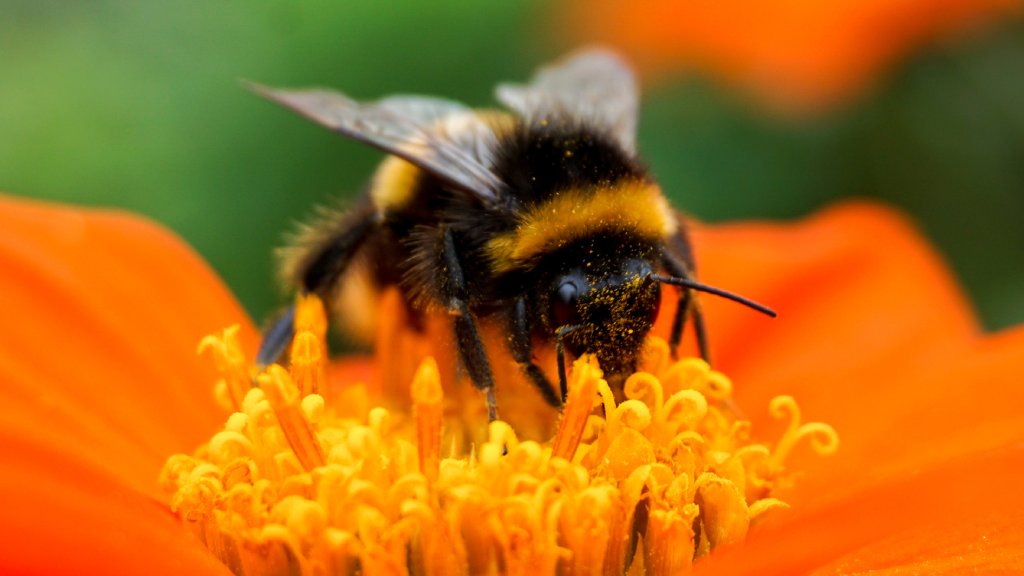Boost Your Natural Pollinators: Native Bees To Welcome To Your Garden
There are many species of native bees in North America that we can support and attract by offering them food and shelter.


There’s little denying the importance of bees within the garden ecosystem. Like other beneficial insects, these pollinators play a major role in the overall health and productivity of most any growing space. As more and more native bees of North America become threatened or see noticeable declines in numbers, many gardeners have taken it upon themselves to help improve their habitat to protect them. Below, we will learn about several specific types in greater detail and explore their needs in more depth.
Bring More Native Bees to Your Garden
Throughout the world, approximately twenty species of bees are considered to be endangered. Bees native to North America are no exception, with species such as Bombus affinis, Bombus pensylvanicus, and Bombus fraternus all facing reduced numbers. Attracting native pollinators to the home garden is an easy way to help local natives and encourage a dynamic growing space.
Attracting native bee types begins with the creation of a habitat. To achieve this, gardeners should choose plants that are rich in nectar and/or pollen. Though some ornamental plants will meet the demands of bees, planting an assortment of wildflowers and local species is the best choice. Prime examples of these plants include bee balm, borage, coneflowers, goldenrod, and salvia. Gardeners should also consider ways to provide water and shelter for the bees. This includes using “bee hotels” that are specifically designed to mimic the insect’s needs.
5 Types of Native US Bees
1. Bumble Bees
Belonging to the genus Bombus, nearly 50 species of bumblebees reside in North America. These bees are most commonly identified by their uniquely furry bodies and alternating yellow and black color patterns. These bees burrow and build colonies underground. The bees flit from bloom to bloom, often carrying pollen in “baskets” attached to their back legs. Some of the best plants for attracting bumblebees to the garden include borage, echinacea, larkspur, and scabiosa.
2. Carpenter Bees
Sharing their signature fuzzy appearance, carpenter bees are often confused with bumblebees. Distinguishing between the two can be easy, however, with the abdomen of carpenter species having a hairless, shiny appearance. The bees are known for their ability to burrow into wood, logs, and other structures as a means to create nesting sites. Sites are then aggressively protected from intruders, including gardeners. Fortunately, their “bark” is much worse than their “bite,” as the male carpenter bee is unable to sting.
3. Digger Bees
Yet another pollinator known for its ability to dig into the soil, digger bees belong to the genus Anthophora. These large bees are most commonly seen moving close to the ground, feeding on short-statured flowers and various types of ground cover. Among the most common sources of food for digger bees include native species of bee balm, clover, hyssop, and mint.
4. Mason Bees
Mason bees (Osmia spp.) most often make their homes in hollow spaces, like decomposing branches or tight places between rocks. Their nest-building materials may also include mud, leaves, and small bits of twig. Mason bees play a vital part in the overall health and pollination of orchards. Plants like crabapples, elderberries, and redbuds are especially attractive to this type of bee, serving as an invaluable source of food.
Gardening tips, videos, info and more delivered right to your inbox!
Sign up for the Gardening Know How newsletter today and receive a free copy of our e-book "How to Grow Delicious Tomatoes".
5. Miner Bees
Also known as Anthophora abrupta, miner bees are a solitary species. The bees build their nest in the ground, foraging nearby flowers for food. Native wildflowers are among the miner’s favorite food sources, including delphinium, penstemon, and various members of the mint family. Though similar in appearance to bumblebees, miners are usually much smaller.
Frequently Asked Questions
What Are The Main Stingless Native Bees?
Most native North American bees are known for their painful sting. However, some species lack this defensive ability. Though aggressive, male carpenter bees are one such type. Another family, Andrenidae, also consists of several species that are unable to sting humans. This is most likely attributed to their small size.
Are Honey Bees Native to North America?
Though honey bees can now be found throughout America, it wasn’t until their introduction from Europe that the species became common. Like bumblebees, honey bees can often be identified by their large baskets that are used to carry pollen from flower to flower. Honey bees are most likely to nest in large numbers in hollow spaces, such as within trunks of older trees or in the attics of houses.
Which Native Bees Are The Most Invasive?
Though large numbers of any bee species may be problematic in the home garden, native types are seldom considered invasive. Most invasive bee species originate elsewhere. This sometimes includes various types of honey bees and bumblebees.

Tonya Barnett has been gardening for 13 years. Flowers are her passion. She has transformed her backyard into a cut flower garden, which she regularly chronicles on her YouTube channel http://www.youtube.com/@tonyawiththeflowers.
-
 Terrifically Tubular Flowers For Hummingbirds: 9 Tube-Flowered Plants To Attract Hummers
Terrifically Tubular Flowers For Hummingbirds: 9 Tube-Flowered Plants To Attract HummersGrowing tubular flowers for hummingbirds helps you create the optimum feeding conditions for your winged friends. Here are nine tubed delights for hummers
By Tonya Barnett
-
 How To Grow Hydroponic Tomatoes For Fresh Indoor Harvests – No Soil Required
How To Grow Hydroponic Tomatoes For Fresh Indoor Harvests – No Soil RequiredLearning how to grow tomatoes in water is easy and allows you to harvest fresh-home-grown produce in every season without any mess.
By Ellen Wells